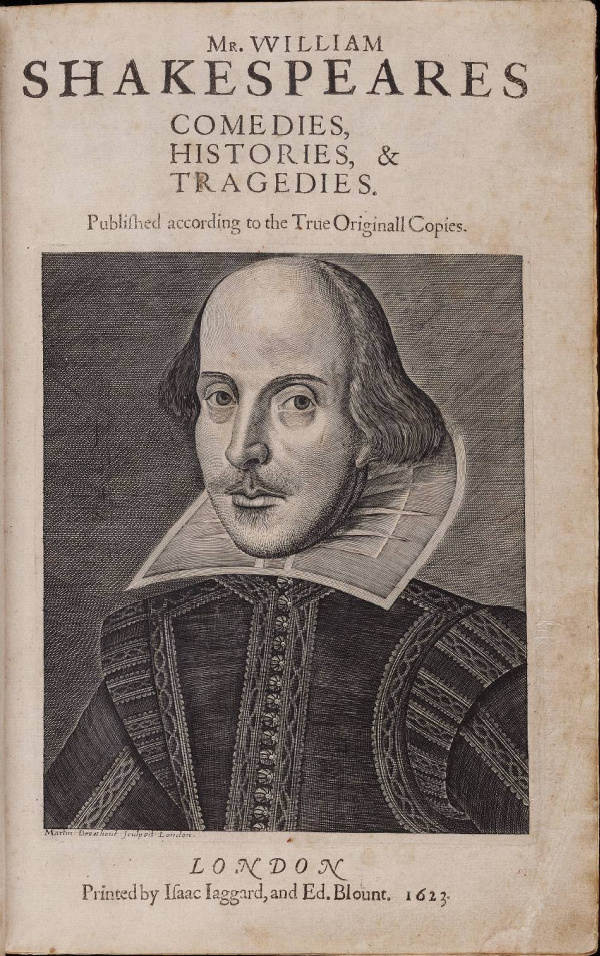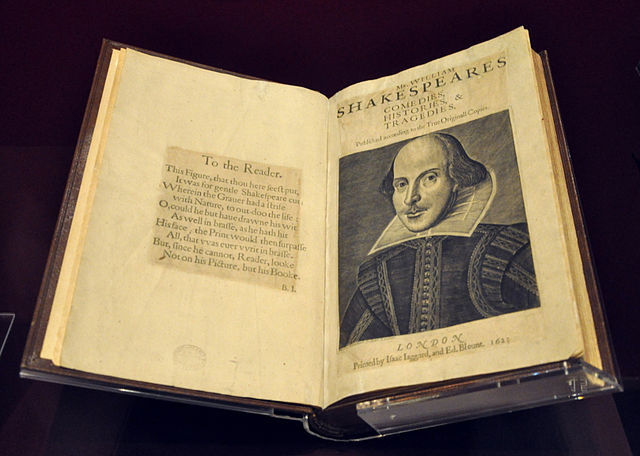Shakespeare’s First Folio
Shakespeare’s First Folio
Shakespeare’s First Folio
-
Hannah
-
Hannah

Tomorrow, a little piece of history will be sold at auction: Shakespeare’s play Henry IV Part One, part of a First Folio. The president of the auction house told the media:
The possibility of owning a piece of the most important literary work extant is a once-in-a lifetime opportunity… Its new owner will possess literary history.
The play has been valued at between £36,000 and £73,000. This is just a fragment of a First Folio; in 2020 a complete folio was bought at auction for in excess of £7.2 million.
So what is all the excitement; why do collectors so badly want to own and preserve this work of literature?
Put simply, the First Folio is commonly regarded as the most important collection of plays and one of the most important literary works of all time, by the most influential writer of all time.
Mr. William Shakespeare’s Comedies, Histories, & Tragedies, known as the First Folio, was published in 1623. Seven years after the writer’s death, 36 plays – almost all of the Bard’s plays – were brought together in one publication.

Before the publication of the First Folio, only half of the writer’s plays had been published, and in quarto format: small and cheap to produce, and popular for plays. But Shakespeare had become acclaimed, and following his death there was scope to preserve his work in the weighty, more prestigious and far more expensive folio format.
The editors of the First Folio had been colleagues of Shakespeare; both John Heminges and Henry Condell were actors in the King’s Men company, who performed Shakespeare’s plays at the Globe theatre in London. Their edited collection, they said, was the definitive work of Shakespeare, his plays ‘as he conceived them’. Because so many of the plays were not printed, they were lost, but Heminges and Condell set out to rectify this, using sources that ranged from transcripts of the plays, to prompt books used to prompt the actors, to the writer’s drafts (known as ‘foul papers’).
Emma Smith, professor of Shakespeare studies at Oxford University, explained that:
The preservation of much of Shakespeare’s work depended on the publishers of the First Folio copying, collating and editing from whatever hand-written scripts and first-hand memories were still available in the 1620s…
The survival of his plays depended on the practical skills of the people who produced this book. (source)
The print run for the First Folio produced somewhere in the region of 750 copies. Today, only 235 are in existence as far as is known (see below), making the book incredibly precious. Many of the First Folios are owned by academic institutes, museums and libraries; the British Library, for example, has five copies.
 Victoria and Albert Museum, London
Victoria and Albert Museum, London
Not only did the Folio preserve Shakespeare’s words, but also his likeness, for this is the source of the portrait with which we are all familiar. It is one of only two reliable renderings of the playwright, the other being the funerary monument in the Holy Trinity Church, Stratford-upon-Avon, where Shakespeare was buried.
The First Folio is a real treasure, and the discovery of a new one is as deeply exciting as unearthing a buried chest of gold. In 2016, a copy was found on the Isle of Bute in Scotland, at Mount Stuart House, and authenticated as being genuine.*
This, of course, sparks the tantalising thought that more copies are likely out there, forgotten in archives and libraries. Can you imagine, finding a First Folio!
* Mount Stuart House was built in the 19th century for the Stuarts of Bute, who are descended from the Stuart King Robert II of Scotland and Robert the Bruce.